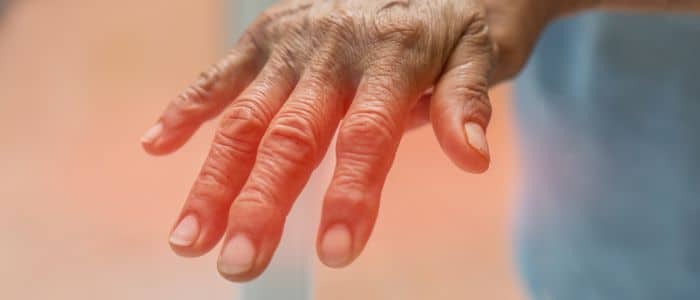
Nerve Lacerations and Trauma: A Step-by-Step Treatment Guide
Suffering from nerve lacerations or trauma can leave you feeling helpless and uncertain about your path to recovery. However, advancements in nerve repair techniques offer hope, allowing you to begin your recovery journey towards regaining sensation and function. In this blog, Consultant Plastic Surgeon Anca Breahna gets into the details of nerve lacerations and repair, providing a complete overview of the various treatment options available.
Take our Plastic Surgery Quiz to find out if you’d be a good candidate for cosmetic surgery.
Types of Nerve Injuries
Nerve injuries can be classified into three main categories based on the extent of damage sustained:
- Neuropraxia: This is the mildest form of nerve injury, where the nerve is temporarily impaired due to compression or stretching. The nerve remains intact, but the myelin sheath (protective covering) is disrupted, leading to temporary loss of sensation or muscle weakness. Recovery is typically complete within several weeks to months as the myelin sheath regenerates.
- Axonotmesis: In this type of injury, the nerve’s axons (the long projections that transmit signals) are disrupted, but the surrounding connective tissue remains intact. This can occur due to severe compression, stretching, or a partial tear. Recovery is possible but may take several months to years, as the axons must regrow across the injury site.
- Neurotmesis: This is the most severe form of nerve injury, where the nerve is completely severed or torn apart, resulting in the loss of both axons and the surrounding connective tissue. In such cases, the distal portion of the nerve (the part beyond the injury site) begins to degenerate, and the nerve cells must regrow across the gap, a process that can take a month to initiate and progress at a rate of approximately 1mm per day.
Nerve injuries can also occur due to various mechanisms, including:
- Laceration/Cut: A sharp object severs the nerve, leading to complete or partial transection.
- Compression/Crush: Prolonged or excessive pressure on the nerve can disrupt its function and cause symptoms like numbness, tingling, or weakness.
- Traction/Stretch: Severe trauma or excessive stretching can pull the nerve from its original position, damaging the axons and surrounding structures.
Regardless of the type or mechanism of injury, nerve damage can manifest in a range of symptoms, including:
- Skin dryness or tightness
- Inability to feel objects properly
- Numbness or tingling sensations
- Burning or electric-like pain
- Muscle weakness or atrophy
Early recognition and proper diagnosis of the nerve injury are important for determining the appropriate course of treatment and optimising the chances of recovery.
Diagnosis and Assessment
Beginning the process of diagnosing and evaluating nerve lacerations and trauma is an important step toward your recovery and well-being. Anca is looking into your medical history, inquiring about any accidents, previous surgeries, or symptoms you may have experienced. A thorough physical and neurological examination is essential, allowing her to evaluate your condition.
Diagnostic tests play a vital role in unravelling the extent of nerve damage. Electromyography (EMG) measures the electrical activity in your muscles, providing insights into potential nerve injuries. Nerve conduction studies assess how well electrical signals pass through your nerves, revealing any disruptions or impairments.
Imaging techniques offer a detailed visual representation of the affected areas. Magnetic Resonance Imaging (MRI) and ultrasound produce high-resolution images, enabling Anca to identify the location and severity of nerve damage. These non-invasive modalities are invaluable in guiding treatment decisions and surgical interventions.
- Electromyography (EMG): Measures electrical activity in muscles to detect nerve injury
- Nerve Conduction Study: Evaluates how well electrical signals pass through the nerves
- Magnetic Resonance Imaging (MRI): Produces detailed images of areas affected by nerve damage
- Ultrasound: Provides high-resolution visuals of the injured site and surrounding tissues
With a combination of these diagnostic tools, Anca can accurately classify the severity of your nerve injury using the Sunderland scale, ranging from reversible (first degree) to complete nerve division (fifth degree). This complex assessment empowers you with the knowledge to begin on your journey towards recovery with confidence.
Surgical Repair Techniques for Nerve Lacerations
The primary approach involves direct nerve repair, where Anca prepares the injured site, approximates the severed nerve ends, aligns them with precision, and maintains their connection using epineural sutures. This method is optimal when performed within the first few days following the injury, offering the best chances for a successful recovery.
However, in cases where the nerve gap is too large for direct repair, nerve grafting becomes a vital solution. This intricate process involves harvesting a segment of your own sensory nerve (autologous graft) and using it to bridge the gap, creating a pathway for the regenerating axons to traverse. While effective, this technique carries the risk of donor site morbidity.
Direct Nerve Repair:
- Performed within the first few days after injury
- Involves preparation, approximation, alignment, and maintenance using epineural sutures
Nerve Grafting:
- Utilised when the nerve gap is too large for direct repair
- Autologous sensory nerve graft bridges the gap
- Potential for donor site morbidity
Alternatives to Autologous Nerve Grafts
These cutting-edge approaches aim to overcome the limitations of traditional techniques, offering new avenues for restoring function and enhancing quality of life.
One promising avenue is the use of nerve conduits, which are tubular structures designed to bridge the gap between severed nerve ends. These conduits provide a physical guidance channel for the regenerating axons, while also creating a controlled microenvironment that can be enriched with support cells, growth factors, and extracellular matrix components. By eliminating the need for nerve harvesting, nerve conduits mitigate the risk of donor site morbidity associated with autologous grafts.
Another frontier in nerve repair involves harnessing the power of gene therapy. By introducing therapeutic genes into the injured nerve or surrounding cells, researchers aim to enhance the regenerative process and promote axonal regrowth. This approach holds the potential to overcome obstacles such as axotomy-induced atrophy, slow regeneration rates, and misalignment of motor and sensory axons.
While surgical interventions are often crucial, it’s important to note that in some cases, conservative management may be the optimal approach. If the nerve is healing properly, rest and time may be the only treatment needed, allowing the body’s natural healing processes to take their course over months or years. Additionally, medications like aspirin, ibuprofen, antidepressants, or corticosteroid injections can be employed to alleviate pain and discomfort during the recovery period.
Complementary therapies also play a vital role in the rehabilitation journey:
- Physical Therapy: Exercises and techniques can help prevent stiffness and restore function in the affected area
- Braces/Splints: These supportive devices can aid in immobilisation and positioning during the healing process
- Electrical Stimulation: Targeted electrical stimulation may help promote nerve regeneration and muscle re-education
Clinical trials are continuously exploring new frontiers in peripheral nerve injury treatments.
Rehabilitation and Recovery
The path to recovery may be challenging, but with Anca’s guidance and a resolute mindset, you can navigate the challenges with confidence. Wearing a sling or brace, engaging in physical therapy sessions, and attending follow-up visits are essential components of this recovery process. Depending on the extent of your injury, recovery may span several months or even longer, but every step taken is a stride towards reclaiming your vitality.
Throughout this journey, you will encounter various treatment modalities tailored to your specific needs. For mild injuries, non-surgical methods may be employed, while severe cases may necessitate peripheral nerve surgery. Regardless of the approach, the ultimate goal remains the same: to restore function, alleviate discomfort, and enhance your overall quality of life.
The rehabilitation process is a delicate dance, addressing a myriad of factors that contribute to your health:
- Pain Management: Techniques such as massage, TENS (Transcutaneous Electrical Nerve Stimulation), low-level laser therapy, relaxation exercises, and acupuncture can alleviate discomfort and promote healing.
- Neuromuscular Junction Health: Maintaining the integrity of the neuromuscular junction is crucial to prevent muscle atrophy and preserve strength.
- Functional Retraining: Through graded exercises and task-specific training, you will relearn essential functional tasks, regaining independence and self-confidence.
- Sensory Reeducation: Techniques like mirror therapy and sensory retraining help rewire the neural pathways, restoring sensation and proprioception.
- Balance and Coordination: Addressing balance deficits and improving proprioception are vital components of the rehabilitation process, enhancing your mobility and reducing the risk of falls.
- Joint Mobility: Passive range of motion exercises, splinting, and joint mobilisation techniques help combat stiffness and preserve joint function.
FAQs about Treatment for Nerve Lacerations and Trauma
How long does it take to recover from nerve lacerations and trauma?
- Recovery time can vary widely depending on the severity of the nerve injury, the specific nerves involved, and the type of treatment received. Minor injuries may heal within a few weeks, while more severe cases could take months or even years for recovery. It’s important to note that some nerve injuries may not fully recover, and ongoing therapy may be required to manage symptoms.
Can nerve lacerations and trauma lead to permanent damage?
- Yes, severe nerve lacerations and trauma can lead to permanent damage if not treated promptly and effectively. The extent of permanent damage largely depends on the type of nerve injury. For instance, neurotmesis, the most severe type of nerve injury, often results in permanent loss of function without surgical intervention. Early diagnosis and treatment are crucial in minimising the risk of permanent damage.
Are there any non-surgical options for treating nerve lacerations and trauma?
Non-surgical options are often considered for less severe nerve injuries or as part of a complex rehabilitation program. These may include:
- Physical Therapy: To strengthen muscles and improve mobility
- Occupational Therapy: To assist in everyday tasks and improve quality of life
- Pain Management Techniques: Including medications, nerve blocks, and transcutaneous electrical nerve stimulation (TENS)
- Alternative Therapies: Such as acupuncture or biofeedback, which may help in managing pain and improving nerve function
What role does nutrition play in recovering from nerve damage?
- Nutrition plays a vital role in nerve repair and recovery. Certain nutrients, such as Vitamin B complex (especially B12), Vitamin E, Omega-3 fatty acids, and antioxidants, can support nerve health and aid in the recovery process. A balanced diet rich in these nutrients can help accelerate healing and improve overall nerve function. Consulting with Anca and a dietitian can provide personalised nutrition advice tailored to support nerve recovery.
How can I prevent nerve lacerations and trauma?
While not all nerve injuries can be prevented, certain measures can reduce the risk:
- Safety Precautions: Follow safety guidelines and wear protective gear during activities that pose a risk of injury.
- Ergonomic Practices: Adopt ergonomic practices at work and during activities to reduce strain on nerves.
- Regular Exercise: Engage in exercises that strengthen muscles around nerves, providing them with better support.
- Prompt Treatment for Conditions: Conditions like diabetes or carpal tunnel syndrome can increase the risk of nerve damage if not managed properly. Regular check-ups and management of such conditions can help prevent complications.
Further Reading about Skin Surgery with Consultant Plastic Surgeon Anca Breahna
- Read more about Skin Surgery
- Read more about Lipoma Removal
- Read more about Ganglion Removal
- Read more about Scar Revision Surgery
- Read more about Lip Lesion Removal
Medical References about Treatment for Nerve Lacerations and Trauma
- Acute Nerve Injury – NCBI
- Peripheral Nerve Trauma: Mechanisms of Injury and Recovery – PubMed
- Acute Nerve Injury Treatment & Management – Medscape
- Peripheral nerve injuries – Diagnosis and treatment – Mayo Clinic
- Traumatic Peripheral Nerve Lesions Treatment & Recovery – Medscape



 Ms Anca Breahna, PhD, MSc, FEBOPRAS, FRCS (Plast) is a highly regarded Consultant Plastic Surgeon specialising in the field of Aesthetic and Reconstructive Plastic Surgery. Anca performs a range of
Ms Anca Breahna, PhD, MSc, FEBOPRAS, FRCS (Plast) is a highly regarded Consultant Plastic Surgeon specialising in the field of Aesthetic and Reconstructive Plastic Surgery. Anca performs a range of 